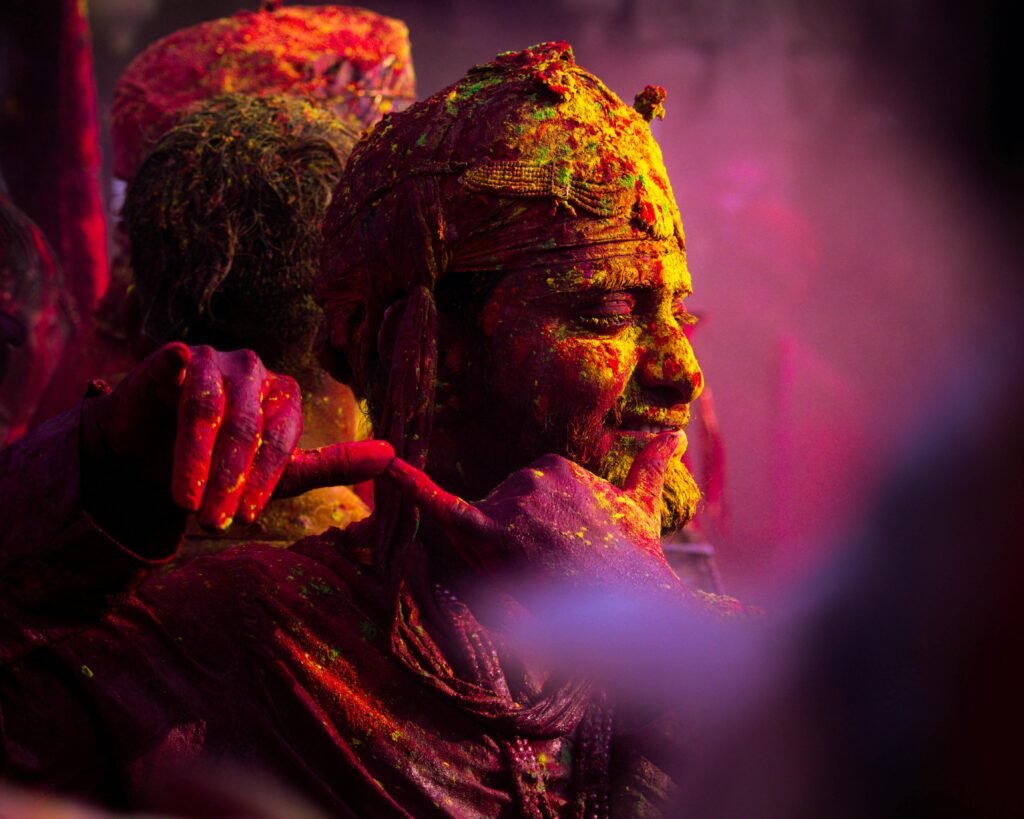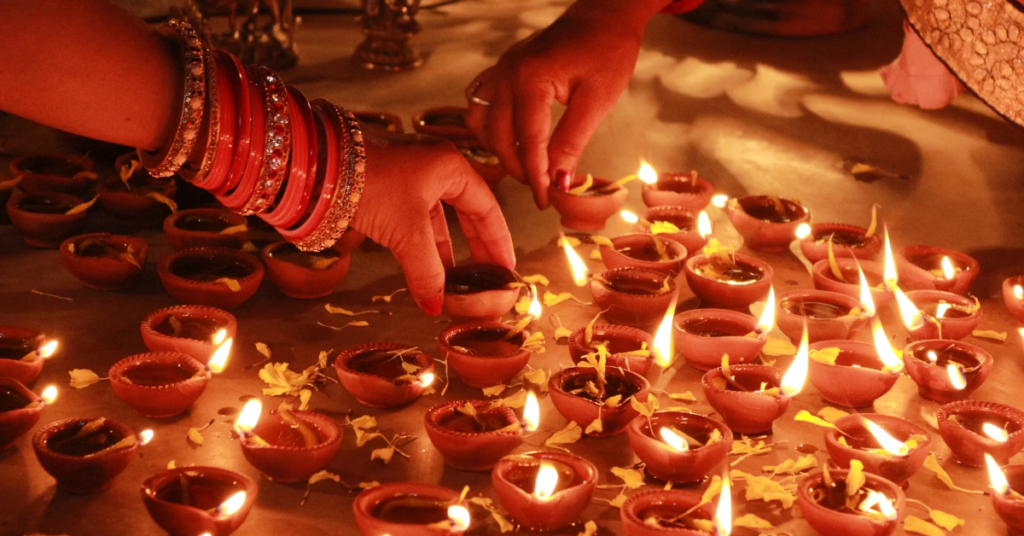
Introduction
Ever wondered why temples come alive with colors, chants, and elaborate ceremonies during festivals? Temple Rituals & Traditions During Festive Times are more than just age-old customs—they are vibrant expressions of faith, history, and devotion. From grand processions to sacred fire rituals, each festival carries a deeper spiritual meaning that connects millions of devotees across India.
Temples have always been the heart of cultural and religious activity. They are not just places of worship but also centers of learning, storytelling, and community bonding. In ancient times, temples doubled as schools where priests taught scriptures, astronomy, and even medicine. Festivals bring out the most fascinating side of these sacred spaces, making them truly magical to experience.
Through this article, you will discover the extraordinary temple rituals performed during major Hindu festivals like Diwali, Holi, and Navratri. You’ll learn about unique traditions like the 56 Bhog offering at Puri Jagannath Temple, Lathmar Holi at Barsana, and the grand Abhishekam of Lord Shiva during Mahashivratri. You’ll also explore the symbolism behind these rituals and how they preserve India’s rich spiritual heritage.
So, get ready to embark on a journey through India’s most enchanting temple traditions—where faith meets festivity, and devotion turns into a grand celebration!
Why Festivals Are Important in Hindu Temple Traditions
Festivals are not just celebrations; they are a way to connect with the divine. Temple Rituals & Traditions During Festive Times strengthen the bond between devotees and deities, making spiritual experiences more profound. Whether it’s lighting lamps during Diwali or singing bhajans during Navratri, every ritual has a deeper meaning.
In Hinduism, festivals mark cosmic events, historical victories, or divine incarnations. For example, Diwali celebrates Lord Rama’s return to Ayodhya, while Janmashtami honors the birth of Lord Krishna. Temples play a crucial role in these celebrations, transforming into centers of devotion, music, and rituals.
Rituals enhance devotion by engaging all the senses. When you hear temple bells, smell incense, or see grand aartis, your mind naturally feels connected to the divine. The Mahabhishek of Lord Shiva during Mahashivratri, where milk, honey, and water are poured on the shivling, is believed to purify the soul.
Festivals also bring people together, creating a sense of unity. The grand Rath Yatra of Puri sees millions of devotees pulling the chariots of Lord Jagannath, symbolizing collective faith. Even offering prasad, like the famous 56 Bhog at Jagannath Temple, represents the joy of sharing divine blessings.
Temple festivals remind us that spirituality is not just about prayer—it’s about celebrating life, faith, and togetherness in the most joyous way!
Unique Temple Rituals Across Major Festivals
India’s temples come alive during festivals with grand rituals, vibrant decorations, and heartfelt devotion. Temple Rituals & Traditions During Festive Times make every festival a divine spectacle. Let’s explore some of the most unique traditions across major Hindu festivals.
Diwali – The Festival of Lights and Lakshmi Puja
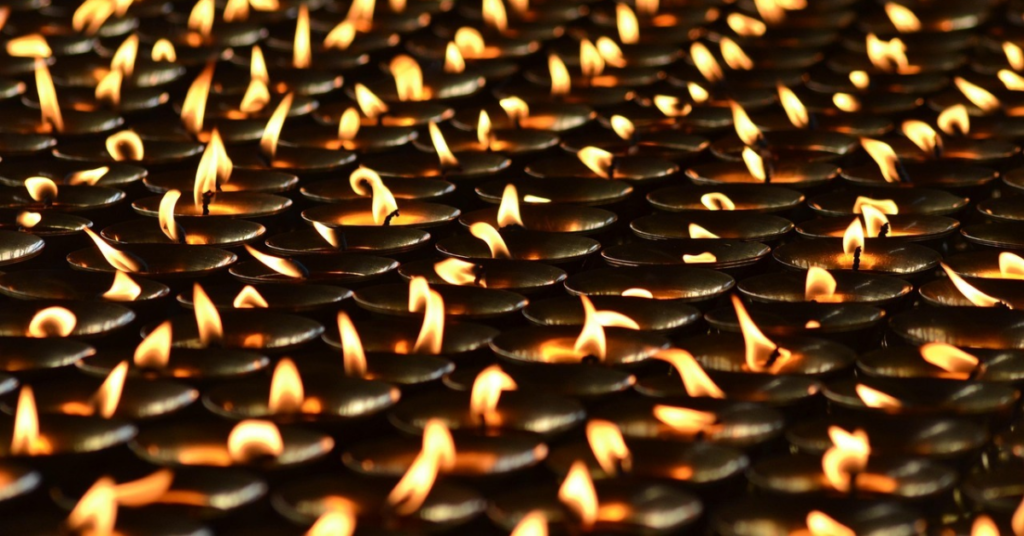
Diwali is incomplete without the worship of Goddess Lakshmi. Temples perform special Lakshmi Puja, inviting the goddess of wealth and prosperity. Devotees light thousands of diyas, symbolizing the victory of light over darkness. The Deepotsav at Ayodhya, where over 22 lakh diyas were lit in 2023, broke world records! Grand aartis take place on the banks of the Sarayu River, creating a mesmerizing sight. Many temples conduct Annakoot, where a mountain of food is offered to the deities before being distributed as prasad.
Holi – A Riot of Colors in Temples
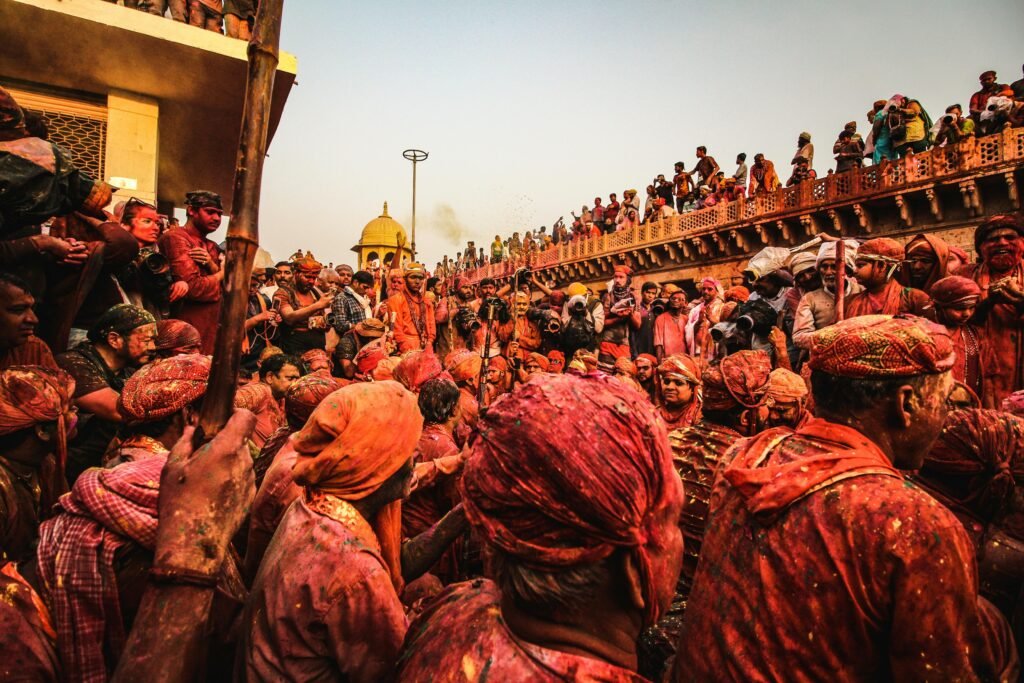
Holi is more than just throwing colors—it is a spiritual celebration of love and devotion. In Barsana’s Lathmar Holi, women playfully hit men with sticks, recreating a legendary prank of Lord Krishna. At the Banke Bihari Temple in Vrindavan, priests shower devotees with flower petals in Phoolon ki Holi, a breathtaking tradition that fills the temple with fragrance and devotion. Devotees also sing and dance in kirtans, celebrating Krishna’s playful spirit.
Navratri – Nine Nights of Divine Feminine Energy
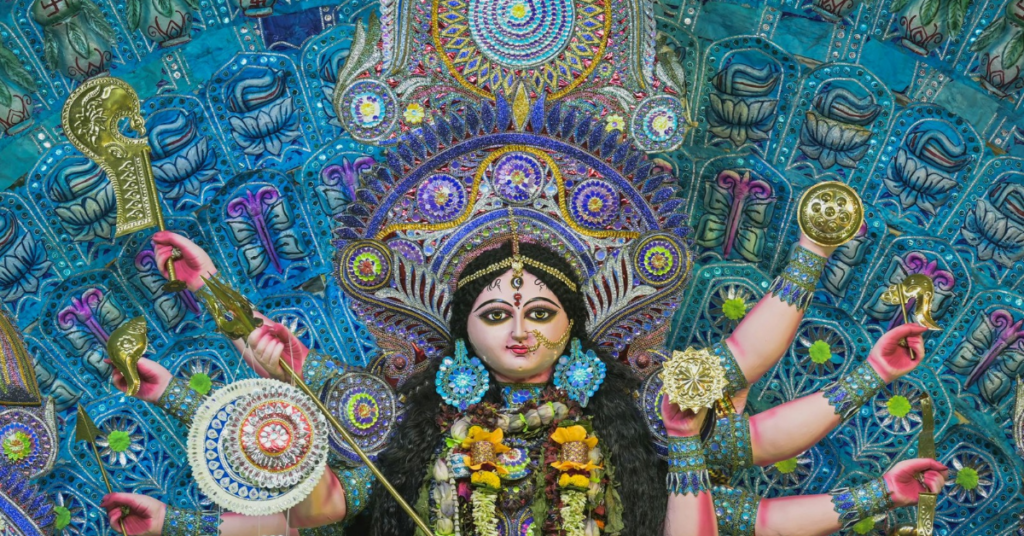
Navratri is dedicated to Goddess Durga and her nine forms. Many temples perform Kanya Puja, where young girls representing the goddess are worshiped and fed as a mark of respect for female energy. In South India, Golu displays are an integral part of Navratri, where families and temples arrange dolls depicting gods, saints, and mythological scenes. Temples conduct elaborate Durga Puja ceremonies, with rhythmic dhol beats, aratis, and the chanting of mantras.
Janmashtami – Celebrating Krishna’s Birth with Joy
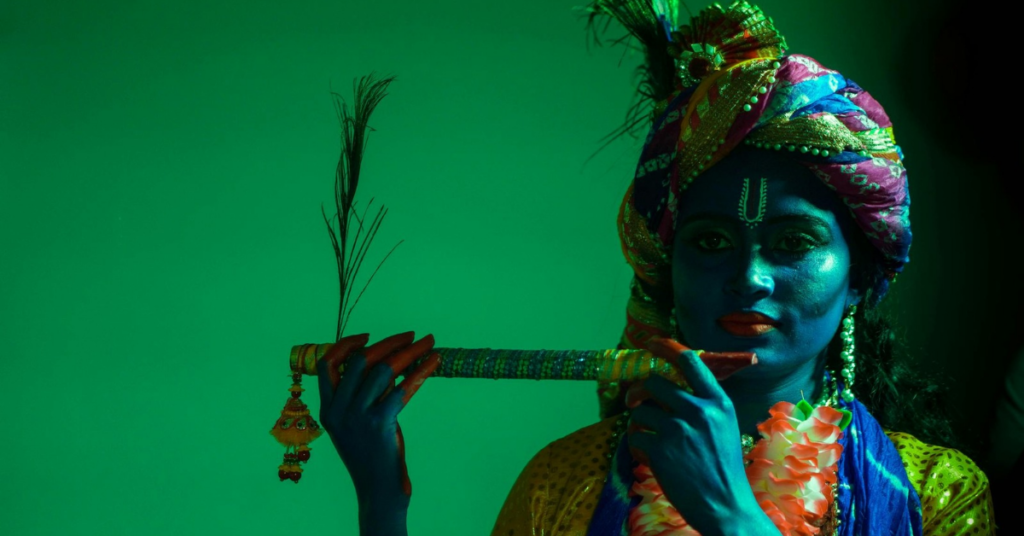
Janmashtami marks the birth of Lord Krishna, and temples celebrate with grand Abhishekam rituals, where Krishna idols are bathed in milk, honey, and curd. Devotees fast until midnight, the exact time of Krishna’s birth. The Dahi Handi tradition in Maharashtra symbolizes Krishna’s childhood mischief of stealing butter. In Mathura and Vrindavan, temples conduct Jhulan Utsav, where Krishna idols are placed in beautifully decorated swings, recreating his playful childhood moments.
Makar Sankranti – Taking a Holy Dip in Sacred Rivers
Makar Sankranti is one of the few Hindu festivals based on the solar calendar. It marks the transition of the sun into Capricorn and is believed to be an auspicious time for bathing in holy rivers. Millions gather for the Ganga Snan at Haridwar, Prayagraj, and Varanasi, seeking purification from past sins. Temples organize special Annadanam (food donation) drives, reinforcing the importance of charity. The day also witnesses grand temple fairs, where devotees participate in kite-flying and traditional performances.
Ram Navami – Honoring Lord Rama’s Birth

Ram Navami is celebrated with deep reverence in Ayodhya, Lord Rama’s birthplace. The highlight is the Rath Yatra, where grand chariots carrying idols of Rama, Sita, Lakshman, and Hanuman are pulled through the streets by thousands of devotees. Temples host special Ramayan recitations, where priests narrate the epic story, emphasizing Rama’s virtues of dharma and righteousness. Devotees offer jaggery and gram as prasad, following ancient traditions believed to bring blessings.
Temple festivals are not just religious rituals; they are living traditions that unite communities in faith and joy. Whether through grand processions, sacred baths, or colorful celebrations, Temple Rituals & Traditions During Festive Times create unforgettable spiritual experiences. Have you ever witnessed any of these unique traditions? If not, add them to your bucket list! To learn more about Temple festivals, read our blog.
The Symbolism Behind These Rituals
Every ritual in Hindu temples has a deep spiritual and symbolic meaning. Temple Rituals & Traditions During Festive Times are not just customs but powerful ways to connect with the divine and purify the mind.
Lighting lamps during Diwali is not just about decoration. It symbolizes dispelling darkness (ignorance) and welcoming light (knowledge and wisdom). In the Bhagavad Gita, Lord Krishna says, “I am the light of all lights”, highlighting the spiritual power of illumination. Chanting mantras, like the Om Namah Shivaya during Mahashivratri, creates positive vibrations and calms the mind.
Fasting during festivals like Navratri and Ekadashi is not just about self-discipline. It is believed to detoxify the body and strengthen willpower. Science supports this, as fasting improves metabolism and mental clarity. Temples also conduct Annadanam (food donation) on festival days, emphasizing the virtue of selfless service.
Collective worship during festivals strengthens social bonds. The Jagannath Rath Yatra, where devotees pull the Lord’s chariot, signifies that when people come together, even the divine moves with them. Singing bhajans in temples unites devotees in a shared spiritual experience, promoting harmony and inner peace.
Through these sacred traditions, Temple Rituals & Traditions During Festive Times remind us that devotion is not just about prayer—it’s about enlightenment, community, and celebrating life with faith!
Regional Variations in Temple Celebrations
India’s temple festivals are as diverse as its culture. Temple Rituals & Traditions During Festive Times vary across regions, reflecting unique customs, legends, and styles of worship. From grand processions in the South to vibrant fairs in the North, each tradition is a spectacle of devotion.
North India vs. South India: A Contrast in Celebrations
In North India, temple festivals are marked by large-scale processions, storytelling, and dramatic performances. The Ram Navami celebrations in Ayodhya include a grand Rath Yatra, where beautifully decorated chariots carry idols of Lord Rama through the streets. During Diwali, temples in Varanasi host mesmerizing Ganga Aarti, where thousands of lamps float on the sacred river, creating a divine glow.
In contrast, South Indian temples focus on elaborate rituals, chariot processions, and vibrant temple decorations. The Brahmotsavam festival at Tirupati Balaji Temple features a nine-day chariot procession, where Lord Venkateswara’s idol is paraded on different vahanas (celestial vehicles). During Pongal, Tamil Nadu’s temples conduct special Surya Puja, thanking the Sun God for prosperity.
Unique Temple Traditions Across India
Rajasthan – The Fire Walking Ritual in Mehandipur Balaji Temple
Devotees of Lord Hanuman walk on burning coal to prove their unwavering faith. This ritual is believed to remove negative energies.
West Bengal – Sandhya Aarti at Dakshineswar Kali Temple
During Durga Puja, priests perform Sandhya Aarti, waving large oil lamps in sync with powerful chants, creating an electrifying spiritual experience.
Kerala – Thrissur Pooram’s Grand Elephant Procession
Kerala’s Thrissur Pooram festival at Vadakkunnathan Temple is famous for its elaborate elephant procession, where beautifully adorned elephants march in sync with temple drums.
Tamil Nadu – The 10-day Chariot Festival in Madurai
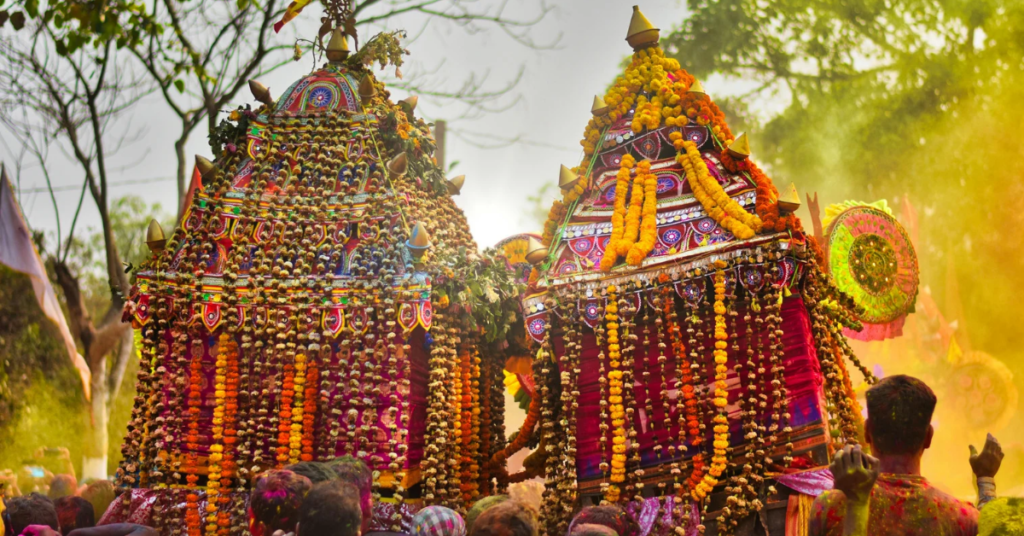
The Meenakshi Temple in Madurai hosts a massive chariot festival, where thousands of devotees pull the deities’ grand raths, symbolizing devotion and community strength.
These unique Temple Rituals & Traditions During Festive Times showcase India’s spiritual richness. Whether it’s a quiet temple lamp-lighting or a massive chariot procession, each tradition tells a story of faith, devotion, and celebration!
How These Rituals Preserve Cultural Heritage
Temple rituals are not just acts of devotion; they are living traditions that connect us to our past. Temple Rituals & Traditions During Festive Times play a key role in preserving India’s rich cultural heritage. They ensure that ancient customs, prayers, and sacred texts are passed down through generations.
For centuries, festivals like Navratri, Diwali, and Rath Yatra have kept temple traditions alive. The Chidambaram Nataraja Temple in Tamil Nadu still follows rituals dating back over a thousand years, including the unique Ananda Tandava dance offering to Lord Shiva. These age-old customs remind us of our spiritual roots and cultural identity.
Festivals also bring communities together, strengthening social bonds. During Jagannath Rath Yatra in Odisha, millions of people unite to pull the Lord’s chariot, symbolizing collective devotion. The grand Kumbh Mela, the world’s largest religious gathering, attracts pilgrims from across the globe, promoting cultural exchange and religious tourism.
By celebrating Temple Rituals & Traditions During Festive Times, you become part of an unbroken chain of faith, devotion, and history. These traditions are not just about worship—they are about celebrating life, togetherness, and heritage!
Conclusion
Temple rituals are more than just religious customs—they are bridges connecting the past with the present. Temple Rituals & Traditions During Festive Times keep ancient traditions alive, ensuring that spiritual wisdom is passed down through generations.
Every diya lit during Diwali, every chariot pulled during Rath Yatra, and every mantra chanted in a temple echoes centuries of devotion. These rituals create a sense of belonging, reminding you that faith is a shared experience. Even in today’s fast-paced world, millions still gather for temple celebrations, proving their lasting significance.
If you want to explore these traditions, start by witnessing a grand temple festival or participating in sacred rituals. Platforms like Divyakripa offer insights into devotional practices, making spiritual learning accessible. Respect, observe, and immerse yourself in these timeless traditions—they are not just about faith, but about celebrating life itself!

